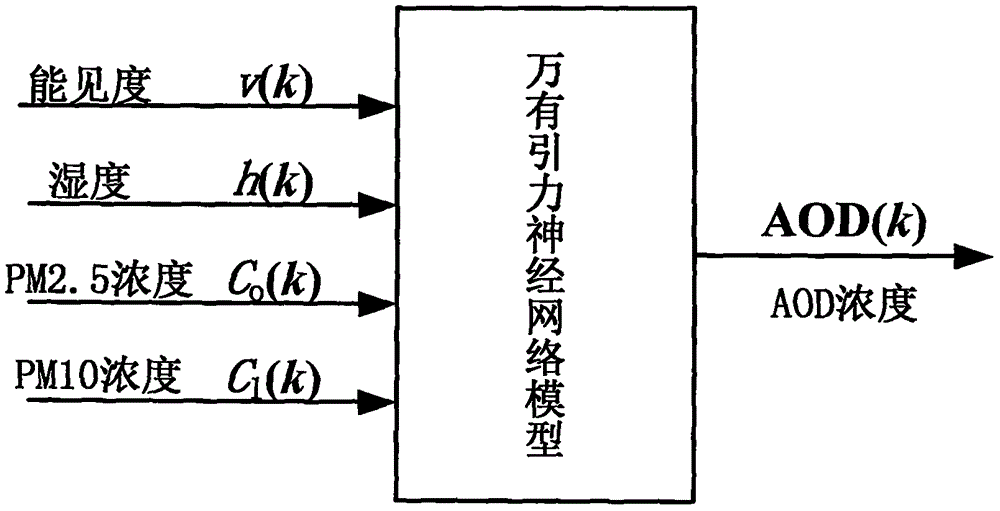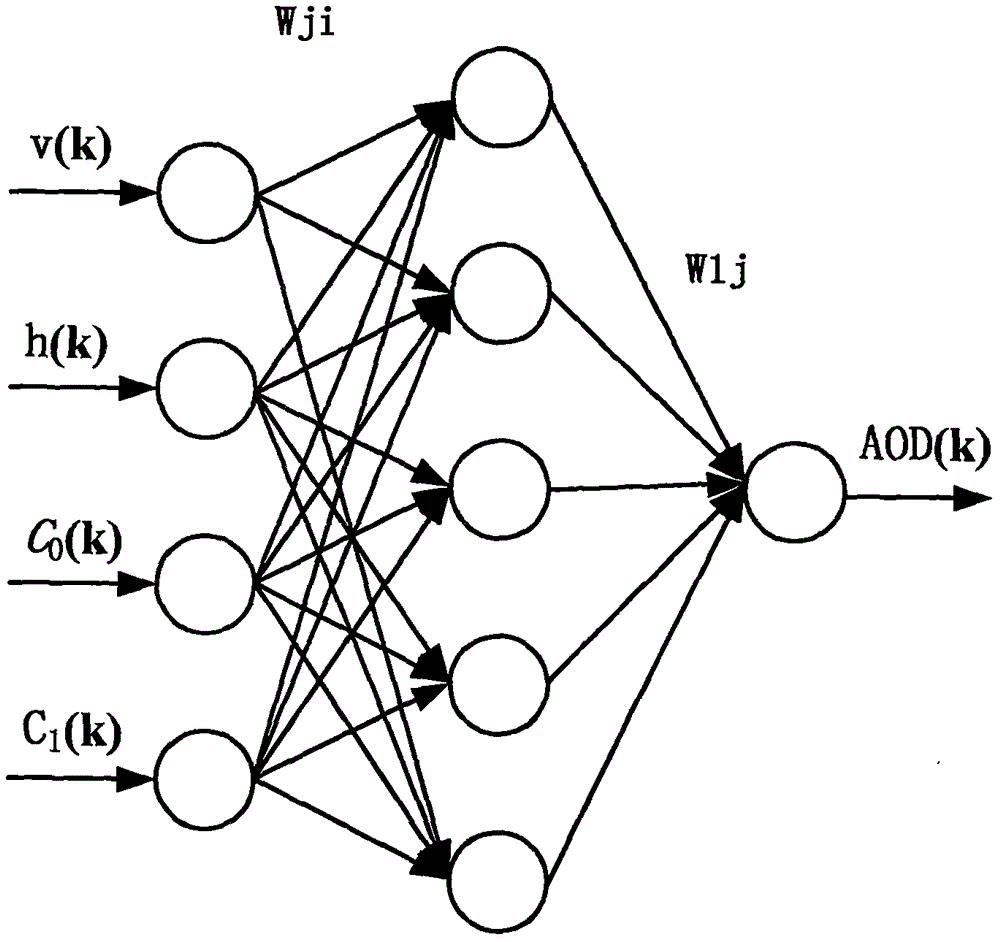AOD (Aerosol Optical Depth) estimation method based on PM2.5 and PM10
An optical depth, -PM10 technology, applied in the field of aerosol optical depth estimation, can solve the problems of difficult real-time acquisition and low inversion accuracy
- Summary
- Abstract
- Description
- Claims
- Application Information
AI Technical Summary
Problems solved by technology
Method used
Image
Examples
Embodiment Construction
[0038] Taking the estimation of the atmospheric aerosol optical depth in Wuhan as a preferred embodiment of the present invention includes the following steps.
[0039] 1. Take ground visibility v, humidity h, PM2.5 concentration C 0 , PM10 concentration C 1 As the input, the atmospheric aerosol optical depth AOD is the output, and the corresponding neural network prediction model of gravity is established and trained, and its structure is as follows figure 1 As shown, the details are as follows:
[0040] a. Collect data to construct a sample set;
[0041] Record the PM2.5 concentration C on the ground at a certain moment k 0 , PM10 concentration C 1 , visibility v, humidity h and atmospheric aerosol optical depth AOD, a sample (C 0 (k), C 1 (k), v(k), h(k), AOD(k)); By collecting multiple samples at different times, a sample set {(C 0 (k), C 1 (k), v(k), h(k), AOD(k))};
[0042] In the embodiment, a total of 250 samples were collected;
[0043] b. Establish a three-la...
PUM
 Login to View More
Login to View More Abstract
Description
Claims
Application Information
 Login to View More
Login to View More - R&D
- Intellectual Property
- Life Sciences
- Materials
- Tech Scout
- Unparalleled Data Quality
- Higher Quality Content
- 60% Fewer Hallucinations
Browse by: Latest US Patents, China's latest patents, Technical Efficacy Thesaurus, Application Domain, Technology Topic, Popular Technical Reports.
© 2025 PatSnap. All rights reserved.Legal|Privacy policy|Modern Slavery Act Transparency Statement|Sitemap|About US| Contact US: help@patsnap.com



